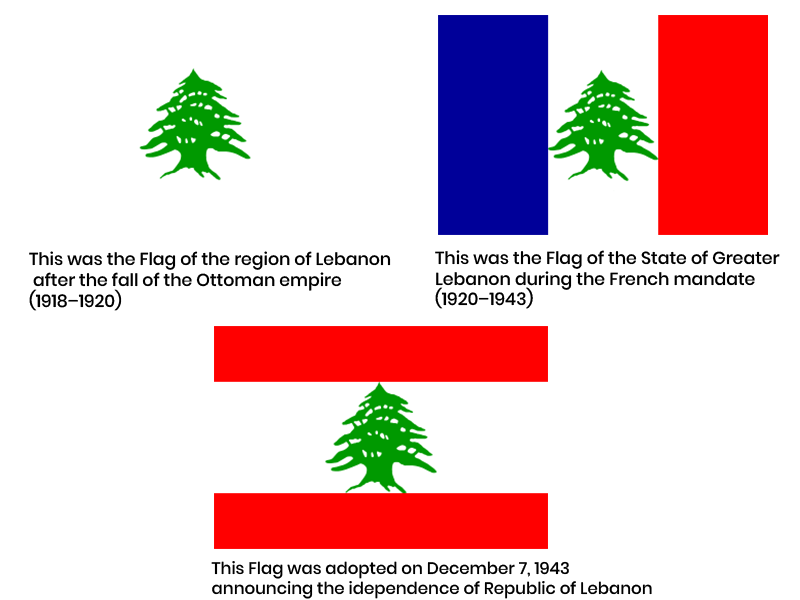Lebanese Flag story
- Home
- Lebanese Flag story

History
Mount Lebanon was a part of the Ottoman empire from the 16th century until the end of World War I when the French landed in Lebanon. After the end of World War I, the allies met during the Paris Peace Conference to decide what the next steps will be. The Patriarch Elias El Howayek presided the Lebanese delegations to France. One of the delegations was carrying a white flag with a cedar tree in the middle. The Ottoman administration ended, and the flag of the Arab revolution was raised for 20 days in Beirut and Baabda.
Later, it was replaced by the French flag to announce the beginning of the French mandate in Lebanon. The majority of the people demanded independence. So, the State of Greater Lebanon was born in 1920.
Since the country was still under the French mandate, the flag of the country was the French flag that contained a cedar tree in the center.
In 1943, the Lebanese flag was adopted just before the independence from France. Bechara El
Khoury was elected president, and Riad Al Solh was appointed Prime Minister.
The French arrested the leaders and suspended the constitution. After a parliamentary session, the Lebanese flag was modified. Henri Pharaon designed the new flag.
He added the red stripes to the flag which was traveled by the Lebanese delegation to France.
The new Lebanese flag was secretly embroidered, and it was carried to the legitimate government in Bchamoun.
The independence of Lebanon was declared on the 22nd of November in 1943.
White represents snow and a symbol of peace and purity. The country has had to endure many invaders over time, and the red stripes symbolize bloodshed during this time to preserve the country from invaders. The mountain of Lebanon Cedar inspired the cedar tree. Cedars are a common tree in Lebanon, and it features centrally on the flag. It symbolizes eternity, holiness, peace, and longevity.
